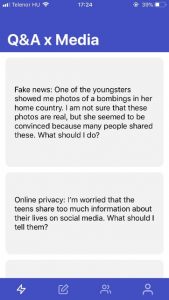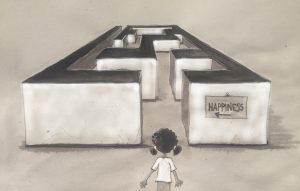The “Media literacy for refugee youth” international project started in 2017 and its aim was to understand how unaccompanied minor refugees use digital technologies and social media. For this, the principal investigator of the project, Dr Annamária Neag, with the support of her mentor, Dr Richard Berger, carried out field work in Sweden, the Netherlands, Italy and the UK. A total of 56 unaccompanied refugee kids were interviewed, and some of them also took part in a digital ethnography phase. Moreover, in London, a group of young people joined the participatory action research phase of the research.
Although the first aim was to understand how these young people use smart phones and social media, the final goal was to create media education materials that can aid their integration into a new society. For understanding the young people’s media lives, Dr Neag also interviewed mentors, guardians and educators who helped her in how to shape these educational materials.




Based on the research findings, the team decided that the best course of action was to create an app that could aid the work of mentors and social workers who look after unaccompanied refugee children. With the help of Kyle Goslan, from Bournemouth University, this app is now freely available for iPhones from the AppStore. Those interested in the app should only do a quick search for Mentor + Media on the AppStore and install it from there.













 Dr. Ashraf cited on ‘Modest Fashion’ in The Guardian
Dr. Ashraf cited on ‘Modest Fashion’ in The Guardian NIHR-funded research launches website
NIHR-funded research launches website Academics write for newspaper in Nepal
Academics write for newspaper in Nepal MSCA Postdoctoral Fellowships 2025 Call
MSCA Postdoctoral Fellowships 2025 Call ERC Advanced Grant 2025 Webinar
ERC Advanced Grant 2025 Webinar Horizon Europe Work Programme 2025 Published
Horizon Europe Work Programme 2025 Published Horizon Europe 2025 Work Programme pre-Published
Horizon Europe 2025 Work Programme pre-Published Update on UKRO services
Update on UKRO services European research project exploring use of ‘virtual twins’ to better manage metabolic associated fatty liver disease
European research project exploring use of ‘virtual twins’ to better manage metabolic associated fatty liver disease